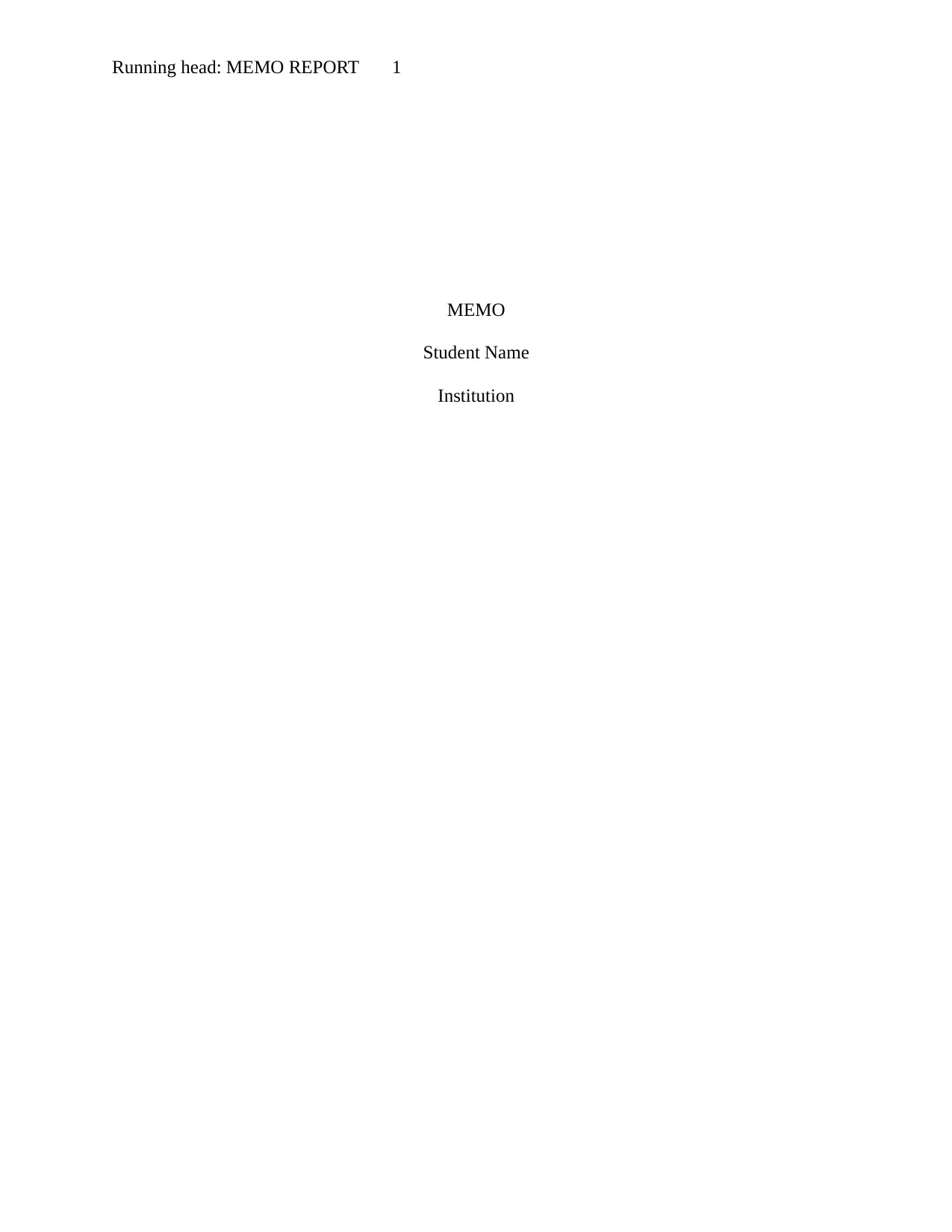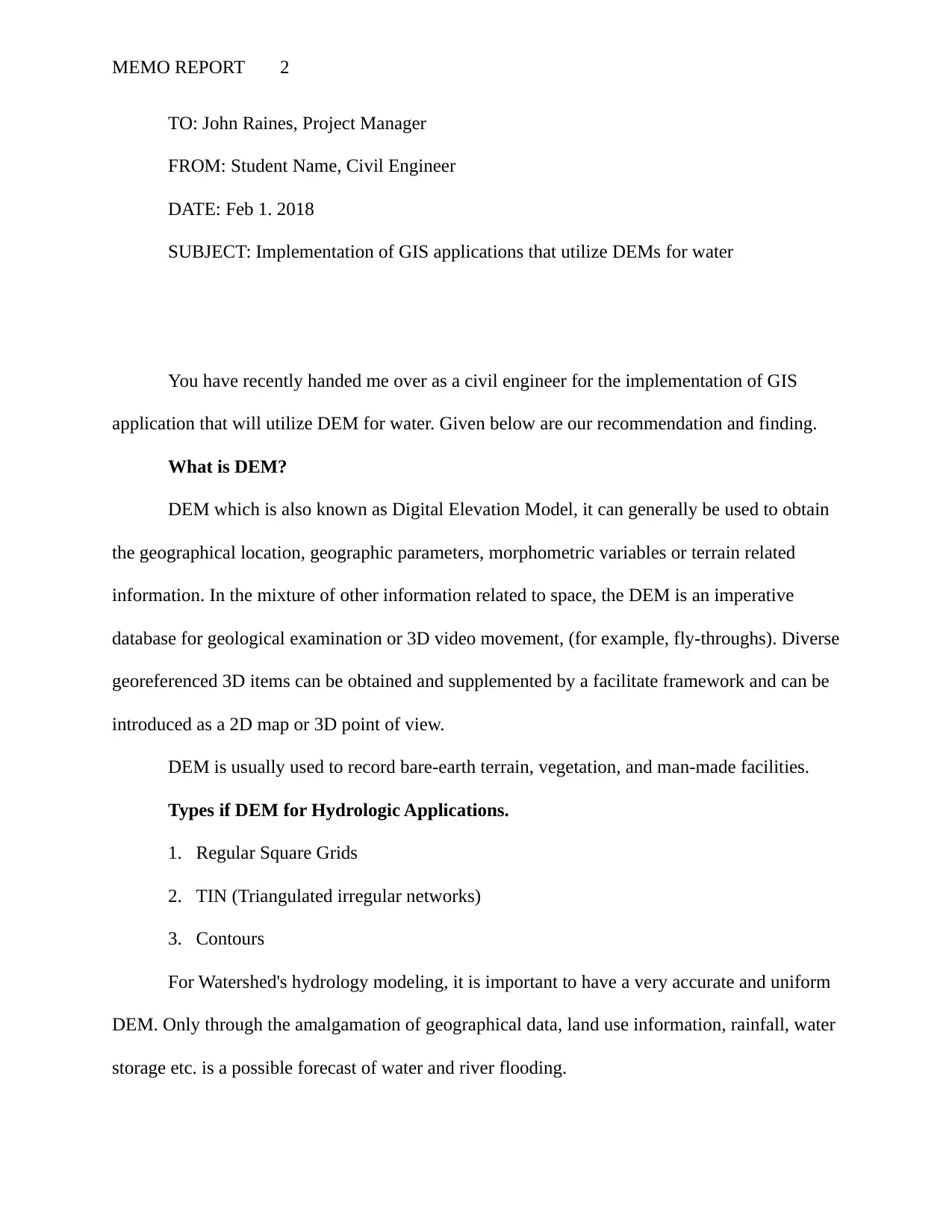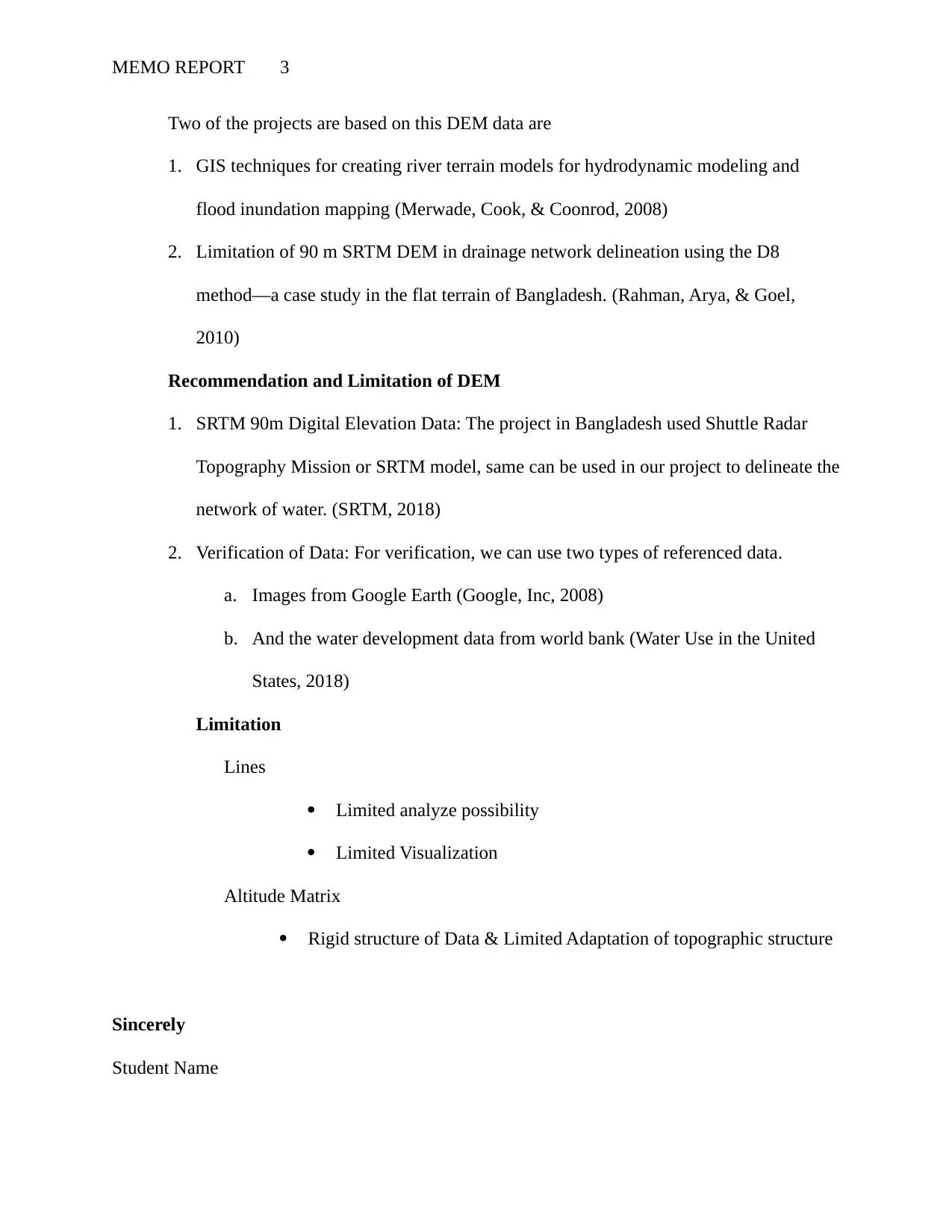GIS Applications Using DEMs for Water
VerifiedAdded on 2019/09/16
|3
|422
|443
Report
AI Summary
This report discusses the implementation of GIS applications utilizing Digital Elevation Models (DEMs) for water management. It defines DEMs and their uses, particularly in hydrology, and outlines different types of DEMs such as regular square grids, TIN, and contours. The report highlights the importance of accurate DEMs for watershed modeling and flood forecasting. It references two projects using DEM data for river terrain models and drainage network delineation. The report recommends using SRTM 90m Digital Elevation Data and suggests verifying data with Google Earth images and World Bank water development data. It also acknowledges limitations of DEMs, including limited analysis possibilities and rigid data structures. The report concludes with a formal sign-off from the civil engineer to the project manager.
1 out of 3




![[object Object]](/_next/static/media/star-bottom.7253800d.svg)